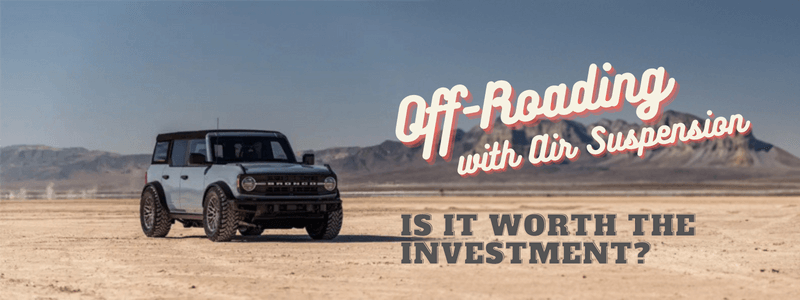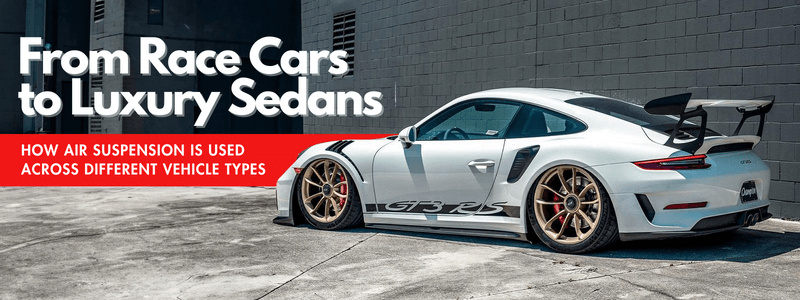
Air suspension is a type of vehicle suspension system that uses pressurized air-filled rubber bags or bladders in place of traditional steel springs. These bags are typically filled with compressed air, which can be adjusted to control the ride height and stiffness of the suspension. Unlike traditional suspension systems, which use metal springs, air suspension allows for a smoother, more comfortable ride, and improved handling capabilities. In this article, we’ll explore the history of air suspension and how it has evolved over time to become a popular feature in modern cars.
In an air suspension system, a compressor pumps air into the bags, which are connected to the vehicle’s frame or axle. As the bags fill with air, they lift the vehicle’s body, raising the ride height. This can be adjusted to accommodate different loads or road conditions.
Air suspension is often used in luxury cars, commercial trucks, and high-performance vehicles, as it provides a smoother ride than traditional suspension systems. It also allows for better handling and stability, particularly at high speeds or when carrying heavy loads. Additionally, air suspension can improve fuel efficiency by reducing wind resistance and drag.
A Glimpse In The Past
The first known use of air suspension can be traced back to the 1920s, where it was primarily used in heavy-duty vehicles such as buses and trucks. These early systems were simple and relied on a series of valves, hoses, and air bags to adjust the vehicle’s ride height and stiffness. However, it wasn’t until the 1950s that air suspension started to be used in passenger cars.
In 1957, the Citroën DS was introduced, and it featured an advanced air suspension system that was unlike anything seen before. The system, which was designed by Citroën’s chief engineer, Paul Magès, utilized a hydraulic pump to pressurize the air and control the suspension’s ride height and stiffness. The system was groundbreaking and provided a level of comfort and handling that was unmatched by traditional suspension systems.
Throughout the 1960s and 1970s, air suspension continued to be used in luxury vehicles, such as the Rolls-Royce Silver Shadow and the Cadillac Eldorado. However, due to its complexity and high cost, air suspension was not widely adopted in mainstream vehicles. It wasn’t until the 1980s that air suspension started to become more common in cars.
In 1984, Lincoln introduced the Continental Mark VII, which featured an air suspension system that was more affordable and reliable than previous systems. The system used a simple air compressor to pressurize the air and control the suspension’s ride height and stiffness. The success of the Continental Mark VII’s air suspension system paved the way for other manufacturers to start offering air suspension as an option in their cars.
Throughout the 1990s and 2000s, air suspension continued to evolve, with manufacturers introducing new features and improvements to make the systems more reliable and efficient. In 1992, Mercedes-Benz introduced the Active Body Control (ABC) system, which used hydraulic servos to control the suspension’s movements and provide an even smoother ride. The ABC system was a significant advancement in air suspension technology, and it quickly became a popular feature in high-end luxury cars.
In 1998, Cadillac introduced the MagneRide suspension system, which used magnetorheological fluid to adjust the suspension’s stiffness in real-time. The MagneRide system was a significant breakthrough in suspension technology, and it provided a level of control and handling that was unmatched by any other system at the time. The MagneRide system quickly became a popular feature in sports cars and high-performance vehicles.
Today, air suspension is a common feature in many luxury cars and SUVs, and it continues to evolve with new features and improvements. Some of the latest advancements in air suspension technology include adaptive damping, which uses sensors to adjust the suspension’s stiffness based on the road conditions, and air springs, which can be adjusted to provide a smoother ride or improved handling depending on the driver’s preferences.
In conclusion, air suspension has come a long way since its introduction in the 1920s. From simple systems used in heavy-duty vehicles to advanced systems used in high-end luxury cars and sports cars, air suspension has revolutionized the way we think about suspension systems. Today, air suspension is a popular feature in many modern cars, and it continues to evolve with new features and improvements. Whether you’re looking for a smoother ride or improved handling capabilities, air suspension is a technology that is sure to enhance your driving.






No comment yet, add your voice below!